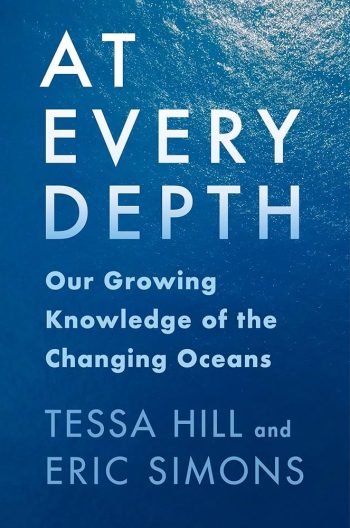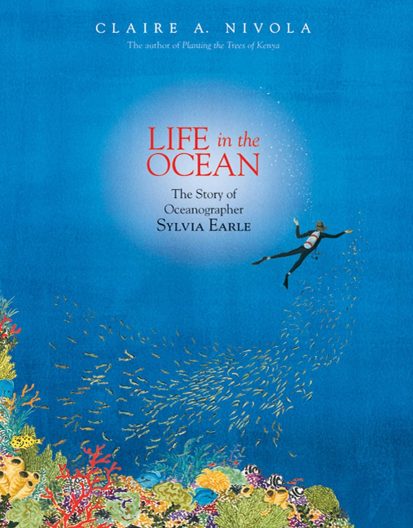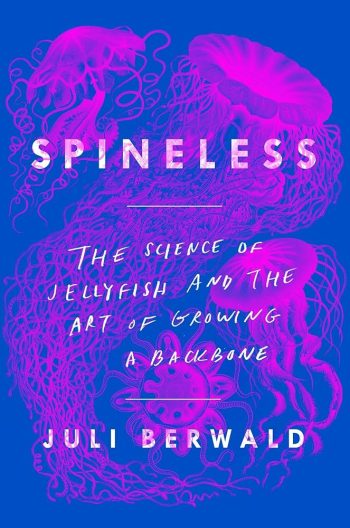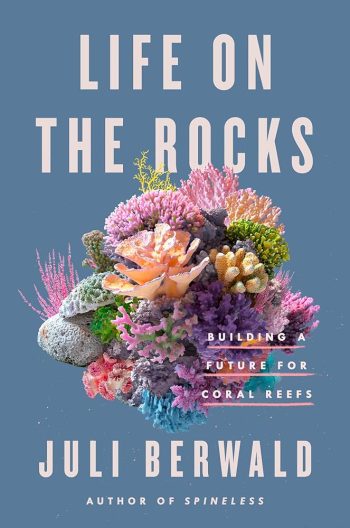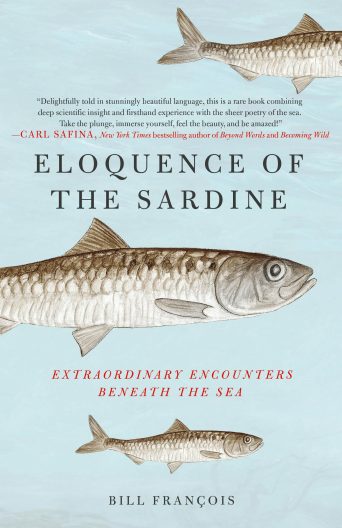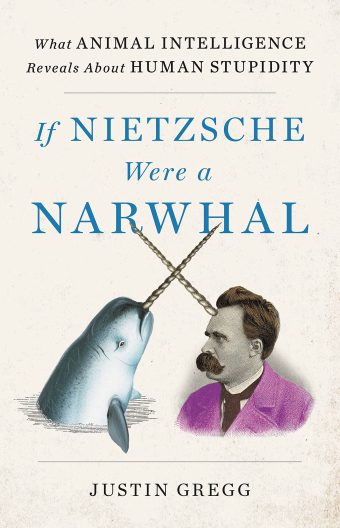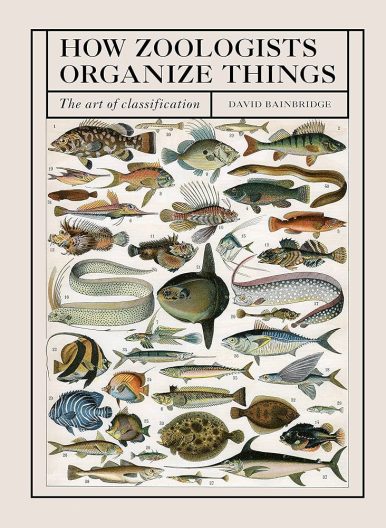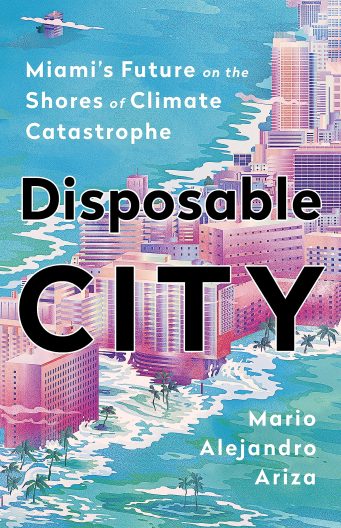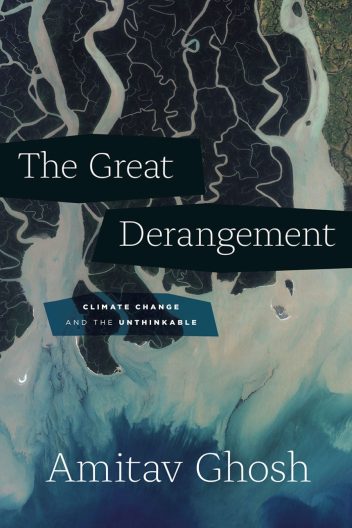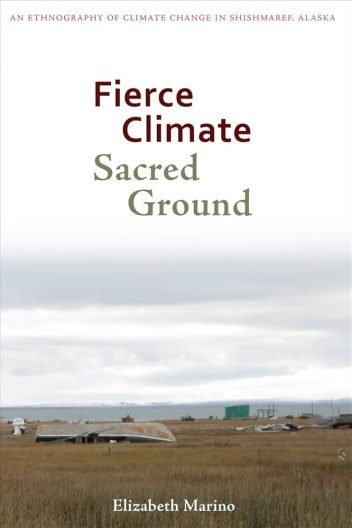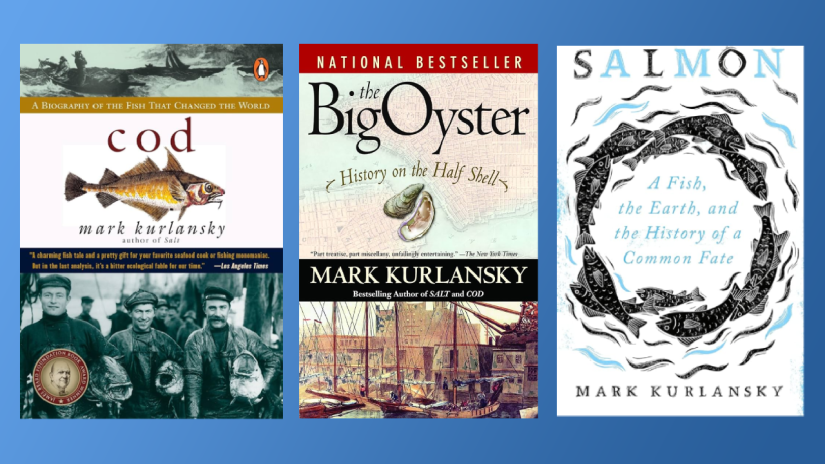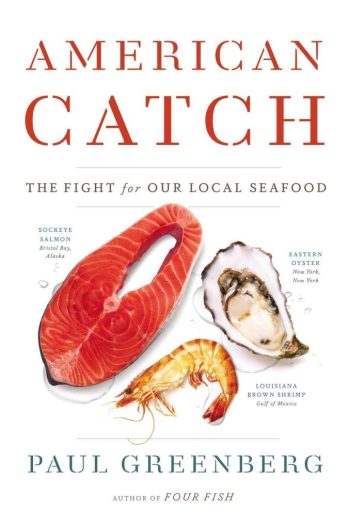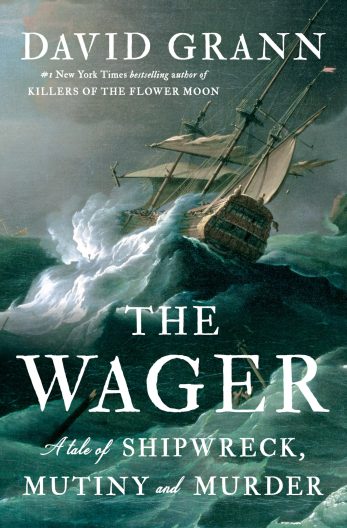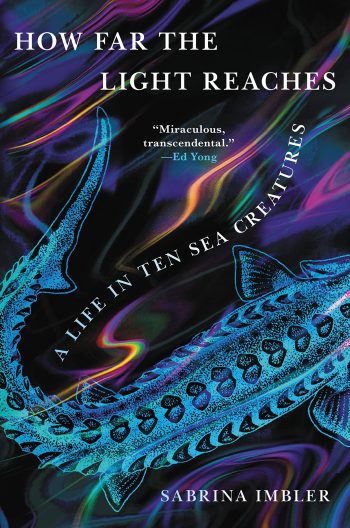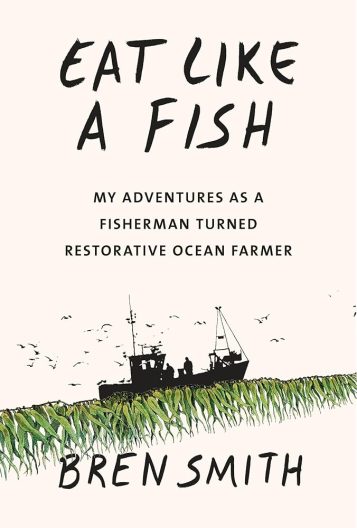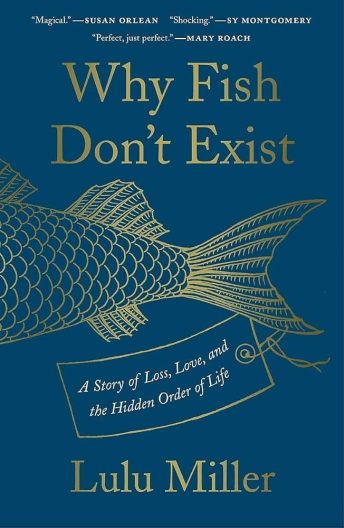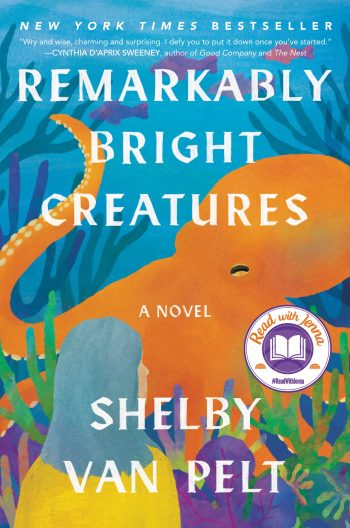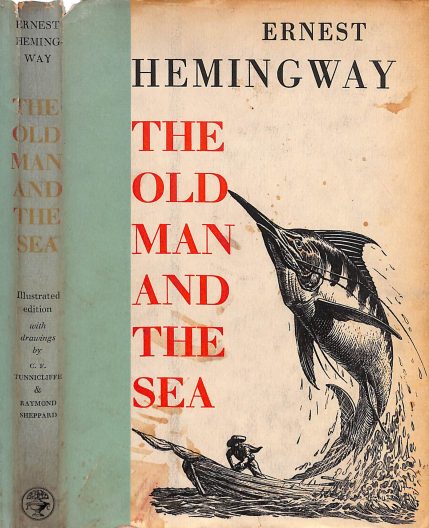Stories from the Sea: Oddly Specific Book Recommendations for Any Kind of Mood
Read this if…
Growing up in landlocked Indiana, I pored over National Geographic atlases and encyclopedias, fascinated by the natural world and how people around the globe interacted with the ocean. These reading materials offered a connection to the underwater world beyond my physical reach. Over twenty years later, my library of ocean literature has expanded to include marine science, memoirs from ocean royalty and explorers, climate science, maritime economics, poetry of the sea, zoology, anthropology of seafood, literary fiction, and more. With this, I’ve gathered a collection of oceanic titles with (hopefully) every person in mind.
You’re captivated by “Her Deepness,” Sylvia Earle…
At Every Depth: Our Growing Knowledge of the Changing Oceans, by Tessa Hill with Eric Simons, Columbia University Press, 2024.
Assuming you’ve already read through Earle’s literary collection, At Every Depth is the next step in ocean education. Hill explores the vast, intricate world beneath the waves and the crucial, evolving role the oceans play in our planet’s climate system. Blending cutting-edge science with compelling narratives, the book dives into how human activity, environmental shifts, and deep-sea exploration are reshaping our understanding of marine life and oceanic health. Accessible to both general audiences and thought-provoking for those with more advanced marine backgrounds, Hill weaves narrative storytelling with scientific exploration of the sea at every depth.
You have kids…
Life in the Ocean: The Story of Oceanographer Sylvia Earle, by Claire A. Nivola, Macmillan Publishers, 2012.
A children’s story about one of the most influential women in ocean exploration, conservation, policy, and advocacy, Life in the Ocean is an inspiring illustrated work about “Her Deepness” by Sylvia Earle. A role model and underwater superhero in her own right, Earle’s journey to become a leader in the underwater world is inspiring for all ages.
You’ve ever cursed a jellyfish for ruining your beach holiday…
Spineless: The Science of Jellyfish and Art of Growing a Backbone, by Juli Berwald, Penguin Random House, 2017.
Jellyfish have long captivated audiences as aloof and seemingly adrift masses, this book brings them front and center to acquaint the reader with the mysterious amorphous beings. Tales of the equally elusive number of scientists who study jellyfish bring a narrative force to Berwald’s work sharing engaging tales of blue water diving, fishing, and being willingly stung by box jellies for science—their sting is the fastest known motion in the animal kingdom with “microscopic spears that pierce with five million times the acceleration of gravity.” Part memoir and part scientific expedition, Spineless catalogues Berwald’s own journey to learn more about jellyfish while balancing the demands of a budding career, motherhood, and life in the marine world.
You just got back from a dive trip in the CORAL TRIANGLE…
Life on the Rocks: Building a Future for Coral Reefs, by Juli Berwald, Penguin Random House, 2022.
A double-header from science writer Juli Berwald, Life on the Rocks takes readers on an eye-opening journey through the fascinating world of coral reefs. Blending personal adventure with scientific insight, Berwald explores the vibrant ecosystems that sustain marine life while highlighting the urgent threats they face from climate change, pollution, and overfishing—if there’s an academic conference with more tears than a coral research symposium, I am unaware. With a deep sense of wonder and a commitment to environmental preservation, Life on the Rocks is both an exploration of the natural world and a call to action to protect these fragile, yet essential underwater habitats.
You are a small Parisian child in need of speech therapy… (It’s fascinating, I promise).
Eloquence of the Sardine: Extraordinary Encounters Beneath the Sea, by Bill François, Macmillan Publishers, 2021.
“Like the various instruments of an orchestra, each voice of the sea has its own distinctive note and wavelength, and sings its story in its own timbre… let’s listen to it.” Stunning prose captures Bill François’ fascination with the underwater world. From the humble sardine to more charismatic creatures like octopus, François uncovers the incredible behaviors and intricate ecosystems beneath the sea through vivid storytelling and keen observation. With a blend of science, adventure, and wonder, The Eloquence of the Sardine takes readers on a journey “in which our world is reflected in the sea, which is a reflection of our world,” revealing how even the smallest creatures can play profound roles in the health of our oceans.
You’re feeling anxious about the current state of the world and wish you were “just” a fish…
If Nietzsche Were a Narwhal: What Animal Intelligence Reveals About Human Stupidity, by Justin Gregg, Hodder & Stoughton, 2022.
“The absurdity of a narwhal experiencing an existential crisis is the key to understanding everything that is wrong about human thinking, and everything that is right about animal thinking.” Justin Gregg
If Nietzsche Were a Narwhal turns the idea of human intelligence on its head, proposing that maybe we’re not as “evolved” as we think. What if our complex brains, capable of profound knowledge and destructive power, are the very thing that holds us back? Could humans actually be better off as a species if we weren’t so intelligent? From our obsession with technology to our knack for self-destruction, our intellect seems more like a curse than a gift.
Scientist Justin Gregg explores how intelligence isn’t always an evolutionary advantage—especially when it leads to war, climate change, and social divisions. He introduces us to animals that don’t need human-like brains to thrive: a cat with a better stock-picking record than Wall Street pros, elephants indulging in joyful drunkenness, and narwhals in blissful ignorance of Nietzschean philosophy. With each story, Gregg makes a compelling case that perhaps the creatures without our mental burdens are the real success stories.
You enjoy sclerochronology (counting layers on clamshells, corals, and otoliths) or have always wondered just how scientists know how old a rockfish is…
How Zoologists Organize Things: The Art of Classification, by David Bainbridge, White Lion Publishing, 2020.
A serendipitous stint in my undergraduate university’s zooarchaeology laboratory revealed the many wonders and satisfaction of cataloging animals. Despite this newfound zoological appreciation, I had to contend with the reality that I was now genuinely excited to identify thoracic vertebrae in multiple fish species. While not quite a first date conversation (unless you are both zoologists, in which case it would be perfect), if you were excited by this anecdote, How Zoologists Organize Things: The Art of Classification will be your new favorite read.
You’ve thought of investing in Miami’s real estate market…
Disposable City: Miami’s Future on the Shores of Climate Catastrophe, by Mario Alejandro Ariza, PublicAffairs, 2020.
Miami’s million-dollar condominiums and pristine beaches are expected to be submerged in water by the end of the century. Further inland, marginalized communities are fighting for resources to protect their lands and ward off developers creating concrete jungles expanding to higher ground. In Disposable City: Miami’s Future on the Shores of Climate Catastrophe, journalist Mario Ariza examines the looming crisis facing Miami, one of the most vulnerable cities in the world to climate change. With rising sea levels, increasingly severe storms, and a fragile infrastructure, Miami’s future hangs in the balance. Ariza takes readers on a sobering journey through the city’s history, its political and economic forces, and the environmental threats that could reshape its landscape. Disposable City is both a stark warning and a powerful exploration of the resilience, inequalities, and urgency of confronting climate change in one of America’s most iconic cities.
Your bookshelves contain This Changes Everything, The New Climate War, and Drawdown…
The Great Derangement: Climate Change and the Unthinkable, by Amitav Ghosh, The University of Chicago Press, 2016.
In The Great Derangement: Climate Change and the Unthinkable, acclaimed author Amitav Ghosh explores the global crisis of climate change and our deranged unwillingness for collective action. Blending personal reflection, historical context, and cultural critique, Ghosh examines how literature, politics, and human consciousness have failed to fully reckon with the scale of environmental devastation. He argues that the climate crisis is not just a scientific or political issue, but a profound cultural and existential challenge. The Great Derangement is a compelling call to awaken from our collective indifference, urging us to confront the unthinkable consequences of our actions before it’s too late.
You want to understand the impacts of climate change from people most affected by its tolls…
Fierce Climate, Sacred Ground: An Ethnography of Climate Change in Shishmaref, Alaska, by Elizabeth Marino, University of Alaska Press, 2015.
A community on the frontline of the climate crisis, Shishmaref, Alaska, is a stark example of climate vulnerability in our lifetimes. Elizabeth Marino’s ethnographic account of the Alaskan village centers the lives of Iñupiaq Eskimos who survive off subsistence harvesting. The story of Shishmaref has been a talking point for national editorials and climate debate, but seldom includes meaningful engagement with local communities, the 500 people whose homes are teetering on the edge. Deeply moving and somber, Fierce Climate, Sacred Ground makes it clear that the impacts of unchecked climate change are not abstract concepts—they are urgent, real, and already unfolding.
You read Wikipedia pages for fun…
Cod: A Biography of the Fish that Changed the World, by Mark Kurlansky, Penguin Random House, 1997. The Big Oyster: History on the Half Shell, by Mark Kurlansky, Penguin Random House, 2006. Salmon: A Fish, the Earth, and the History of a Common Fate, by Mark Kurlansky, Oneworld Publications, 2020.
Mark Kurlanksy is the king of holistic deep dives on niche topics. From recounting the collapse of the Atlantic cod fishery to vignettes (and mignonettes) of oysters’ journey from peasant food to delicacy, his works are mouthwateringly compelling. Drawing from oral histories and archival research, Kurlansky brings these marine stories to life with prose that appeals to those with an appetite for history, food, and the sea.
You’re a locavore with an appetite for seafood…
American Catch: The Fight for Our Local Seafood, by Paul Greenberg, Penguin Press, 2014.
In a world where lobsters were peasant food flooding American shores and New York’s waters fueled oyster-hungry dockworkers, it’s surprising that 91% of the seafood Americans consume now comes from overseas. In American Catch, Paul Greenberg explores the decline of America’s seafood industry and the reasons why we stopped eating local seafood. From 2005 to 2015, the U.S. imported seafood in record amounts, while exporting more than ever. Greenberg dives into the stories of New York oysters, Gulf shrimp, and Alaskan salmon following the decline of local seafood consumption. Through his journey, Greenberg also highlights restoration efforts and campaigns to reclaim sustainable seafood harvests.
You read Lord of the Flies in school but hoped for a little more drama…
The Wager: A Tale of Shipwreck, Mutiny, and Murder, by David Grann, Knopf Doubleday Publishing Group, 2023.
In The Wager: A Tale of Shipwreck, Mutiny, and Murder, David Grann unravels one of the most extraordinary and harrowing true stories of survival at sea. In 1740, the British warship His Majesty’s Ship the Wager set out on a secret mission, only to be wrecked on a desolate island off the coast of Patagonia. Stranded in brutal conditions, the survivors built a makeshift boat and embarked on a perilous 2,500-mile journey across storm-ravaged seas, hoping to find rescue. But when a second group of survivors landed months later, a shocking truth emerged—those who were hailed as heroes in Brazil were, in fact, mutineers. The ensuing battle of accusations and betrayals led to a high-stakes court-martial, where the men’s fates hung in the balance. Grann’s masterful storytelling examines themes of human resilience, moral dilemmas, and the brutal realities of life at sea, delivering a gripping narrative full of twists and shocking revelations.
You are tired of typical narratives in marine science…
How Far the Light Reaches: A Life in Ten Sea Creatures, by Sabrina Imbler, Little, Brown and Company, 2022.
Marine creatures never cease to amaze scientists and the public alike with their resilience, and aptitude for life in the most extreme and hostile environments. In How Far the Light Reaches, queer, mixed-race author and science journalist Sabrina Imbler draws powerful connections between the wonders of marine life and the complexities of human experience. Weaving together themes of resilience, adaptation, sexuality, and protection, Imbler blends marine biology with personal stories. They explore how some of the most unique forms of community and care are found in the sea—from the self-sacrificing mother octopus guarding her eggs to phytoplankton chains that act as both individual organisms and colonies. How Far the Light Reaches is a debut memoir that challenges our perceptions, inviting us to view the world through a fresh lens—one that draws us into the extraordinary miracles of life, both on land and at sea.
You want another reason to enable your oyster happy hour habit…
Eat Like a Fish: My Adventures as a Fisherman Turned Restorative Ocean Farmer, by Bren Smith, Knopf Doubleday Publishing Group, 2019.
What’s one to do when faced with the grim reality of the commercial seafood industry? For fisherman Bren Smith, the answer came in the form of kelp and oyster beds, leading him to the world of “restorative ocean farming.” In Eat Like a Fish, Smith offers an edible alternative that he believes could transform global dining, much like Michael Pollan’s Omnivore’s Dilemma and Jonathan Safran Foer’s Eating Animals did for land-based agriculture. While some of his claims may feel a bit overhyped and disconnected from the still-developing kelp mariculture industry in the U.S., his vision of multi-use ocean farming has sparked the interest of a new generation of kelp farmers and oystermen. One notable upside? More oyster happy hours.
You need to take a long drive (and cry)…
Why Fish Don’t Exist: A Story of Loss, Love, and the Hidden Order of Life, by Lulu Miller, Simon & Schuster, 2020.
I first knew of David Starr Jordan as the namesake of my university’s biology department—buildings that were later stripped of his recognition following a reckoning with his troubling past. Little did I know, this was just the surface of a much larger story. In Why Fish Don’t Exist, Lulu Miller dives deeper into Jordan’s life, uncovering the truths and tragedies that shaped his legacy, while weaving in her own personal revelations. Part biography of a controversial figure, part memoir, Miller’s exploration examines what it means to persevere in a world where chaos and uncertainty are ever-present.
You stopped eating calamari and pulpo after watching My Octopus Teacher…
Remarkably Bright Creatures, by Shelby Van Pelt, Ecco, 2022.
Cephalopods are having a cultural moment. From the hit Netflix documentary My Octopus Teacher to the controversy over a planned octopus farm in Spain, these intelligent creatures are capturing hearts everywhere. Enter Shelby Van Pelt’s debut novel, Remarkably Bright Creatures—a story of friendship, self-discovery, and hope. The novel follows Tova, a widow who forms an unlikely bond with Marcellus, a Giant Pacific Octopus housed in a fictional aquarium along Puget Sound. Through alternating perspectives, we watch as Marcellus unravels the mystery of Tova’s son, who disappeared nearly thirty years ago. With exquisite pacing and a setting rooted in the heart of the Pacific Northwest, this novel will show you why cephalopods truly are remarkably bright creatures.
You wax poetic about your last big catch…
The Old Man and the Sea, by Ernest Hemingway, Jonathan Cape, 1952.
A man. A marlin. 160 pages of perfect prose captures the physical and mental feat of the catch, but also so much more. The Old Man and the Sea is a timeless classic, Ernest Hemingway’s most beloved novel, and truly deserves to be read in one sitting.
While this list is by no means exhaustive, hopefully you found a recommendation that resonates with you. The second half of this list will be published in spring, so send me an email (mpeduto@uw.edu) if there’s a book you think I should include!
